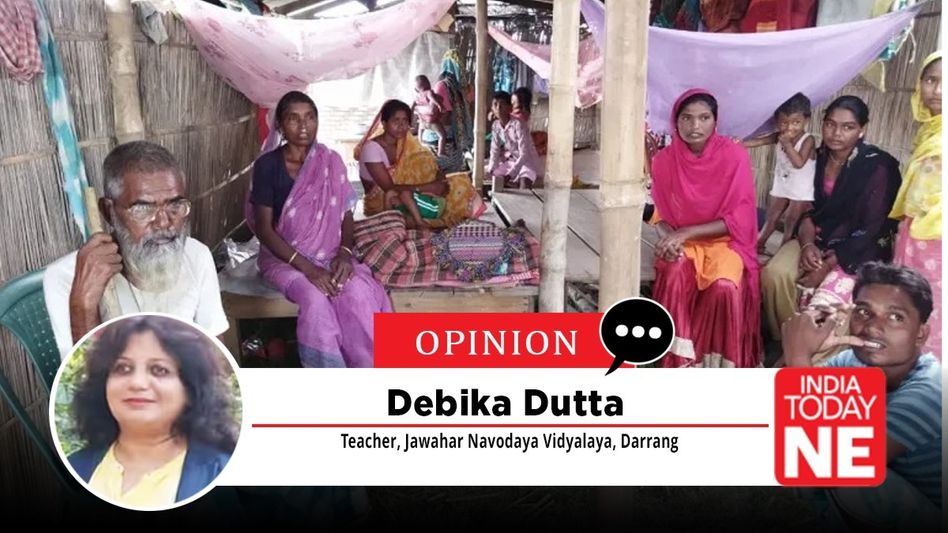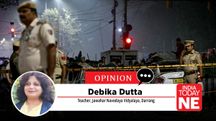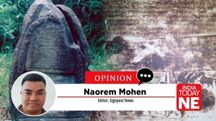The Unquiet Question: Identity and Belonging in Today’s Assam
Assam stands today in a moment of quiet turbulence—where demographic uncertainty, historical memory, and cultural anxiety intersect in complex ways. Few Indian states have carried the burden of migration-linked apprehensions for as long, or as intensely, as Assam.

Assam stands today in a moment of quiet turbulence—where demographic uncertainty, historical memory, and cultural anxiety intersect in complex ways. Few Indian states have carried the burden of migration-linked apprehensions for as long, or as intensely, as Assam.
The anxieties are neither recent nor manufactured; they are the result of a century-long demographic churn that began under colonial policies and continued through the porous borders and political upheavals of the post-Partition decades. The question of “Who truly belongs?” still defines Assam’s most crucial debates.
Census data, though interpreted differently by different scholars, offers a picture that cannot be ignored. Between 1961 and 2011, several lower Assam districts—Dhubri, Goalpara, Barpeta, South Salmara—recorded decadal population increases consistently above the state average. Dhubri’s population, for instance, grew by 24% in 2001 and 22% in 2011, compared to Assam’s overall 17%. Such spikes are not seen in Upper Assam districts, which have shown far more moderate growth rates.
Linguistic data adds another dimension. While Assamese remains the largest linguistic group, the percentage of Assamese speakers has remained almost stagnant for decades—48.8% in 1971 to 48% in 2011—even as tribal languages decline in several pockets due to land pressure and migration-linked demographic restructuring. For states built on delicate cultural ecosystems, such small shifts carry large symbolic weight.
Critics often caution that demographic change should not be over-interpreted. They argue that variations in fertility rates, rural mobility, and economic migration contribute significantly to population trends. Civil society groups further warn that sensationalising data risks stigmatising communities and harming Assam’s social cohesion. Some economists highlight that migrant agricultural labour has contributed to productivity in riverine regions.
Also Read: Mamoni Raisom Goswami: The Wounded Healer of Assamese Consciousness
These arguments deserve respect. Assam’s discourse must not lose nuance. No society can build harmony on sweeping generalisations or suspicion. And yet, to deny the lived experiences of indigenous communities is equally irresponsible. Land ownership patterns in char areas, rapid demographic shifts in strategically sensitive river belts, and the reconfiguration of electoral constituencies have led to genuine fears of cultural and political marginalisation. These anxieties are not born of prejudice; they arise from observable ground realities.
The judiciary itself has expressed concern. The Gauhati High Court, in several observations over the past decade, has flagged “unchecked infiltration” and its implications for Assam’s identity and political stability. The 2024 remark describing the process as a “silent and invidious demographic invasion” was not a political statement—it was a judicial reflection on government data and field reports.
Indigenous tribal groups—Bodos, Misings, Tiwas, Rabhas, Deoris—have repeatedly voiced fears of shrinking land, pressured livelihoods, and erosion of traditional institutions. For them, identity is not a theoretical construct but a lived, fragile reality.
At the same time, humanitarian concerns must be acknowledged with equal seriousness. Generations of people who grew up in Assam know no other homeland. Their children attend Assamese schools, speak local languages, and aspire to be part of the state’s future. Reducing their entire existence to the category of “outsider” risks deepening divisions and undermining the inclusive ethos Assam has historically nurtured.
Thus, the challenge before Assam is twofold: protecting indigenous rights while preserving human dignity and constitutional fairness. This demands not rhetoric but calibrated governance.
In this context, recent government policies attempt to address demographic anxieties through structural interventions. Border management has undergone significant strengthening: fencing vulnerable stretches of the Indo-Bangladesh border, deploying riverine patrols, and introducing technological surveillance in char areas. These measures are long overdue in a state where the Brahmaputra’s shifting topography creates natural vulnerabilities.
Land governance reforms—digitisation of land records, eviction drives against organised encroachments, and satellite monitoring of high-risk belts—aim to secure indigenous land rights. These reforms are not above criticism, and due process must be ensured, but they represent an institutional response to longstanding demands.
Population stabilisation efforts focusing on women’s education, maternal health, and socio-economic upliftment in backward districts address one of the structural contributors to demographic imbalance. These are development-based responses rather than coercive interventions, and therefore carry long-term credibility.
The citizenship question remains the most contentious. The NRC update—though criticised for procedural flaws—was rooted in the historic demand of the Assam Accord. The state government’s push for corrections, re-verification in sensitive districts, and a transparent appeal mechanism reflects an attempt to salvage the process while ensuring fairness.
Opposition voices argue that such measures risk deepening polarisation or selectively targeting communities. These concerns should not be dismissed; a policy architecture that lacks fairness will not enjoy legitimacy. Yet, rejecting the entire framework without offering alternatives does little to address Assam’s demographic vulnerabilities. Governance cannot be paralysed by fear of criticism.
Assam’s path forward must be one where identity and inclusion co-exist rather than collide. The objective is not exclusion but equity—ensuring that indigenous communities do not lose cultural or political ground, while those who qualify for citizenship by law are treated with dignity and due process.
The future will demand a quieter, deeper politics—one that resists easy binaries. Identity must be preserved without hostility; belonging must be affirmed without erasing constitutional duties. The unquiet question of Assam can move towards resolution only when policy, empathy, and evidence converge.
For a state shaped by history and hope in equal measure, the task is not simply to guard its past but to imagine a shared future where no community feels threatened, displaced, or voiceless. That future will define whether Assam remains trapped in its unease or steps into a confident tomorrow.
Copyright©2025 Living Media India Limited. For reprint rights: Syndications Today









